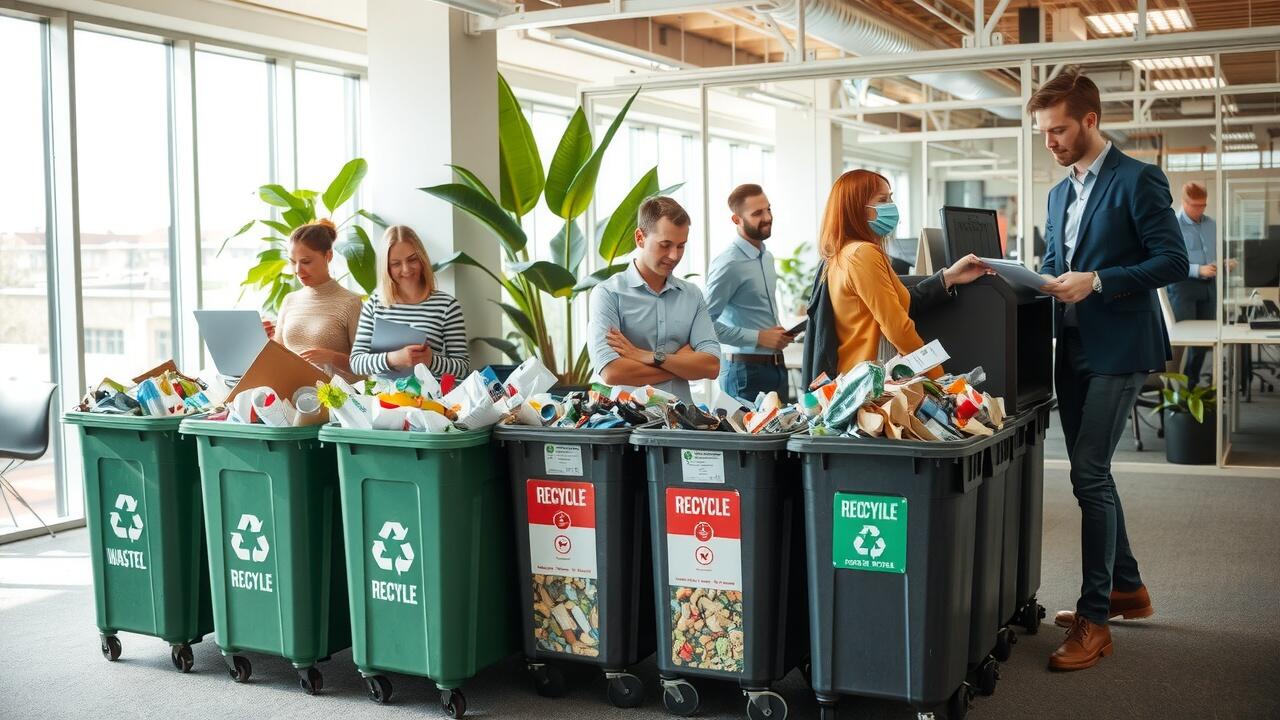Waste management shapes the health of our environment and communities every day. Different types of waste management processes include recycling, composting, landfilling, and waste-to-energy conversion, each playing a vital role in handling different materials.
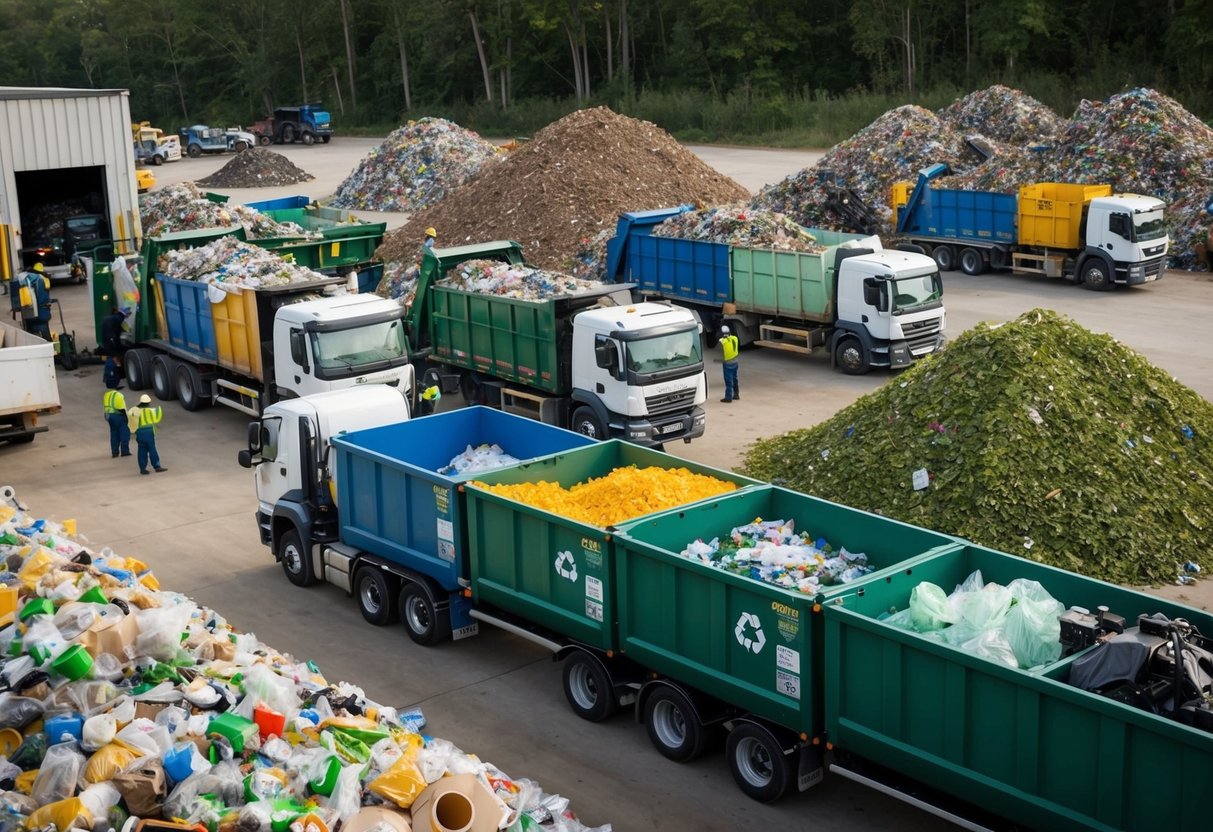
Modern waste handling focuses on sustainability and resource conservation. Cities and businesses now sort materials at the source, turning food scraps into compost and packaging into new products. This approach helps cut pollution and saves valuable resources.
Smart waste management systems protect both public health and the environment. When communities use the right mix of disposal methods, they reduce their environmental impact while creating useful products from materials that would otherwise go to waste.
The Fundamentals of Waste Management
Proper waste management involves a systematic approach to handling and disposing of materials. The methods and principles used aim to protect public health and the environment while maximizing resource recovery.
Definitions and Key Concepts
Waste management refers to the collection, transport, processing, and disposal of unwanted materials. This includes household trash, industrial byproducts, and hazardous materials.
Successful waste management systems require careful planning and proper infrastructure. These systems must handle different types of waste appropriately.
Types of waste include:
- Municipal solid waste
- Industrial waste
- Hazardous waste
- Medical waste
- Electronic waste
Waste Management Hierarchy
The waste management hierarchy ranks waste handling methods from most to least environmentally preferred:
- Reduce: Minimize waste creation at the source
- Reuse: Use items multiple times before disposal
- Recycling: Convert waste materials into new products
- Recovery: Extract energy or materials from waste
- Disposal: Final option when other methods aren’t possible
Modern waste treatment facilities focus on recycling and recovery before disposal. This helps conserve resources and reduce landfill use.
Types of Waste
Waste management systems handle many different forms of unwanted materials. Each type requires specific handling methods to protect people and the environment.
Household vs Industrial Waste
Household waste comes from daily activities like cooking, cleaning, and personal care. This includes food scraps, packaging, and used items.
Industrial waste is created by factories, construction sites, and manufacturing plants. It often contains chemicals, metals, and production byproducts.
Different waste materials need separate collection methods:
- Household: Trash bins, recycling containers
- Industrial: Large dumpsters, specialized containers
- Construction: Roll-off containers, debris boxes
Organic Waste and Composting
Organic waste breaks down naturally. Common examples include:
- Food scraps
- Yard trimmings
- Agricultural waste
- Paper products
Composting turns organic waste into nutrient-rich soil. The process takes 2-6 months depending on materials and conditions.
Key composting requirements:
- Proper mix of green and brown materials
- Adequate moisture
- Good airflow
- Regular turning
Solid and Liquid Waste
Solid waste includes any discarded materials in solid form. Examples:
- Plastic containers
- Metal objects
- Wood
- Glass bottles
Liquid waste management deals with fluids and semi-fluids:
- Wastewater
- Oils
- Chemicals
- Sewage
Each type needs specific storage containers and treatment methods.
Hazardous Waste
Hazardous materials pose risks to health or the environment. Common types:
Chemical Hazards:
- Cleaning products
- Pesticides
- Paint thinners
- Industrial solvents
Physical Hazards:
- Sharp objects
- Pressurized containers
- Radioactive materials
Special handling and disposal methods are required by law.
Electronic Waste
E-waste contains valuable and harmful materials. Common items include:
- Computers
- Phones
- TVs
- Appliances
Many components can be recycled:
- Precious metals
- Plastic
- Glass
- Circuit boards
E-waste requires special processing to prevent toxic materials from harming the environment. Certified recyclers extract valuable materials and safely dispose of harmful components.
Waste Management Techniques
Modern waste management uses multiple methods to handle different types of waste efficiently and safely. These techniques aim to reduce environmental impact while maximizing resource recovery.
Recycling and Recovery Processes
Material cycle modeling forms the basis of effective recycling systems. The process starts with collection and sorting of recyclable materials into distinct streams.
Common recyclable materials include:
- Paper and cardboard
- Glass and metals
- Plastics (types 1-7)
- Electronic waste
Resource recovery facilities use magnetic separation, optical sorting, and manual inspection to ensure material quality. Advanced facilities can achieve recovery rates of 80-90% for many materials.
Modern recycling plants use automated systems to increase efficiency. These include conveyor belts, AI-powered sorting robots, and specialized shredders.
Incineration and Energy Recovery
Waste-to-energy facilities convert non-recyclable waste into electricity and heat through controlled burning. Modern incinerators operate at temperatures above 850°C to ensure complete combustion.
Key benefits of incineration:
- Reduces waste volume by up to 90%
- Generates renewable energy
- Destroys harmful pathogens
- Minimizes methane emissions
Advanced air pollution control systems remove particulates and harmful gases. Scrubbers and filters capture over 99% of pollutants before release.
Landfill Design and Leachate Management
Modern landfills use engineered cells with multiple protective layers. A typical design includes:
- Bottom liner system
- Leachate collection pipes
- Gas collection wells
- Daily cover material
- Final cap system
Leachate management systems collect and treat contaminated water. Treatment methods include:
- Biological treatment
- Reverse osmosis
- Chemical oxidation
- UV disinfection
Gas collection systems capture methane for energy generation or flaring.
Biodegradable Materials and Packaging
Biodegradable packaging breaks down naturally without harmful residues. Common materials include:
- PLA (polylactic acid)
- Cellulose-based materials
- Starch-based polymers
- Hemp and agricultural waste
These materials decompose in 3-6 months under proper conditions. Industrial composting facilities maintain optimal temperature and moisture levels.
New innovations include edible packaging and marine-degradable materials.
Alternative Techniques and Innovations
Pyrolysis converts waste into bio-oil and char at high temperatures without oxygen. This process handles hard-to-recycle materials like mixed plastics.
Gasification technology transforms organic waste into synthetic gas. The gas can power engines or produce chemicals.
Emerging technologies include:
- Plasma arc treatment
- Enzymatic processing
- Mechanical biological treatment
- Chemical recycling
These methods offer higher efficiency and lower emissions than traditional approaches.
Environmental and Public Health Considerations
Poor waste management creates serious risks to both the environment and human populations. Health problems occur at every step of waste handling, from collection to disposal, affecting air quality, water sources, and soil health.
Pollution and Contamination
Improper waste disposal releases harmful substances into air, water, and soil. Open dumps and landfills emit methane, a potent greenhouse gas that contributes to climate change.
Uncontrolled waste burning releases toxic chemicals and particulate matter into the atmosphere. These pollutants can travel long distances and affect communities far from disposal sites.
Water bodies near waste sites often become contaminated through leachate, a toxic liquid that forms when rain filters through waste. This threatens both surface water and groundwater supplies.
Impact on Natural Resources
Waste mismanagement depletes valuable resources through the continuous extraction of raw materials instead of recycling existing materials.
Key impacts include:
- Soil degradation from chemical contamination
- Deforestation for new landfill sites
- Groundwater depletion
- Loss of marine ecosystems from plastic pollution
Public Health Concerns
Waste poses significant risks to human health, particularly in areas with inadequate disposal systems. Direct exposure can cause respiratory problems, skin infections, and other medical conditions.
Disease-carrying vectors like rats and mosquitoes thrive in poorly managed waste sites. This increases the risk of infectious diseases in nearby communities.
Common health risks:
- Respiratory diseases from airborne particles
- Waterborne illnesses from contaminated water
- Infections from direct contact with waste
- Chemical poisoning from toxic substances
Waste and the Circular Economy
The circular economy model aims to eliminate waste by keeping materials in use through reuse, repair, and recycling. This approach reduces environmental impact while creating economic opportunities.
Plastic waste management represents a key challenge and opportunity in the circular economy. Innovative recycling technologies and product design can transform plastic waste into valuable resources.
Successful circular systems require:
- Extended producer responsibility
- Improved recycling infrastructure
- Design for recyclability
- Consumer education and participation
Policy and Legislation
Government rules and policies shape how waste gets handled around the world. Laws and regulations set standards for waste collection, processing, and disposal while offering rewards for good practices.
International Protocols and Standards
The Basel Convention sets rules for moving hazardous waste between countries. It requires countries to get permission before sending toxic materials across borders.
The Paris Agreement pushes nations to cut waste-related greenhouse gas emissions. Many countries have agreed to reduce landfill methane and increase recycling.
ISO 14001 creates waste management standards for businesses worldwide. Companies must track their waste and show plans for reducing it.
National and Local Regulations
Each country creates its own waste management laws and rules. These cover:
- Waste collection schedules
- Recycling requirements
- Landfill regulations
- Hazardous material handling
- Disposal site permits
Local governments enforce these rules through fines and inspections. Many cities require businesses and homes to separate different types of waste.
Incentives for Sustainable Waste Management
Many regions offer tax breaks for eco-friendly waste practices. Companies can save money by recycling and reducing waste.
Popular incentive programs include:
- Reduced fees for composting
- Grants for recycling equipment
- Tax credits for waste reduction
- Rewards for proper e-waste disposal
Some cities use “pay-as-you-throw” systems. People who make less trash pay lower collection fees.
Community and Business Adoption
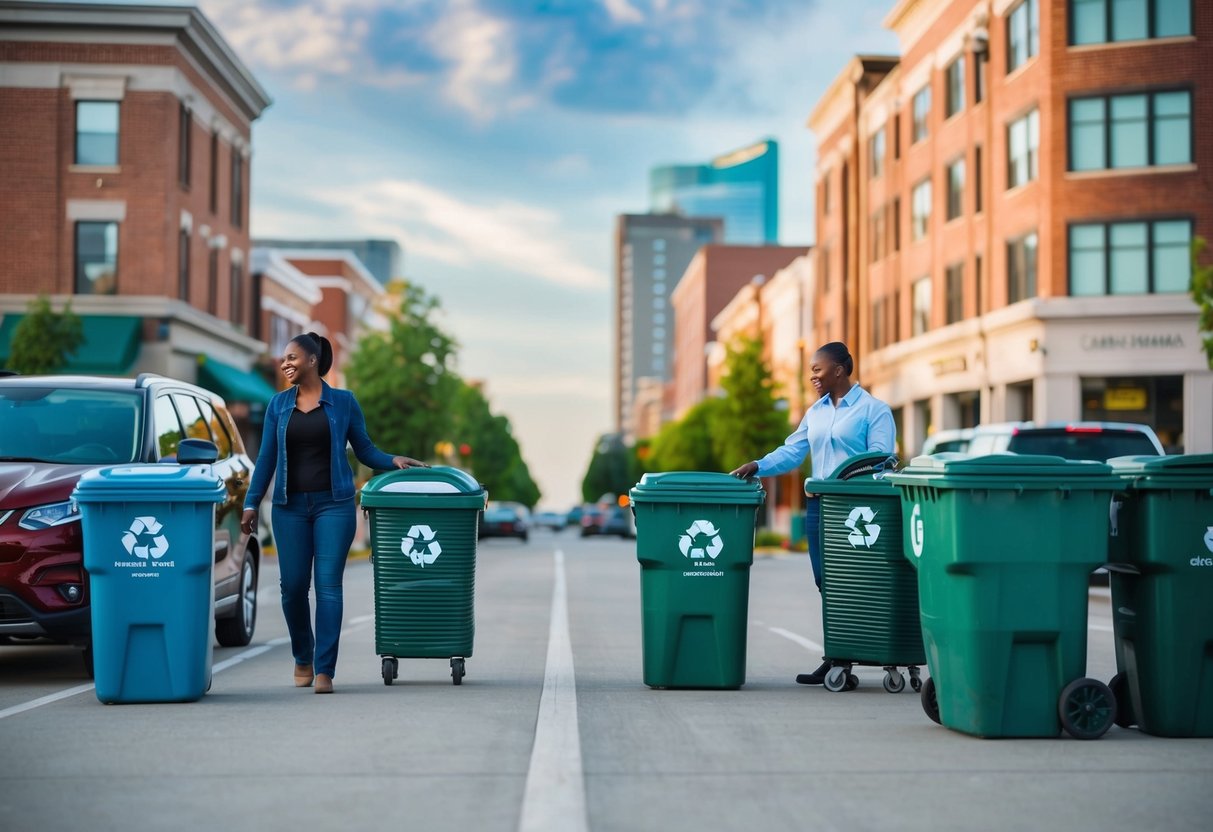
Getting communities and businesses to adopt better waste management practices requires education, clear policies, and practical tools for implementation. Success depends on making waste reduction easy and showing clear benefits.
Public Awareness and Education
Communities need simple, actionable information about proper waste disposal and recycling. Local governments run targeted campaigns through social media, workshops, and printed materials to teach residents about waste management practices.
Educational programs work best when focused on specific behaviors like separating recyclables or composting food waste. Schools play a key role by teaching children proper waste habits early.
Clear signs and labels on bins reduce confusion about what goes where. Regular feedback helps people understand the impact of their efforts.
Corporate Responsibility
Businesses can cut costs and help the environment through smart waste reduction. Small and medium companies often struggle to start recycling programs due to space and budget limits.
Successful corporate programs typically include:
- Employee training on proper sorting
- Designated recycling coordinators
- Partnerships with recycling vendors
- Regular tracking of waste amounts
Setting specific reduction targets helps maintain momentum. Recognition programs reward departments that excel.
Role of Waste Audits
Regular waste audits show exactly what materials are being thrown away. This data helps identify opportunities to reduce waste and increase recycling.
The audit process includes:
- Collecting waste samples
- Sorting by material type
- Weighing each category
- Analyzing disposal patterns
Monitoring waste management through audits allows companies to track progress and adjust programs as needed.
Development of Recycling Programs
Creating effective recycling systems requires planning and infrastructure. Municipal programs work best when they make recycling convenient for residents.
Key program elements include:
- Convenient collection schedules
- Proper sorting bins
- Clear contamination guidelines
- Regular pickup service
Successful programs start small and expand based on community needs. Adding new materials gradually helps prevent confusion.
Working with local recycling companies ensures collected materials have end markets. Regular program reviews help identify areas for improvement.
Current Challenges and Future Directions
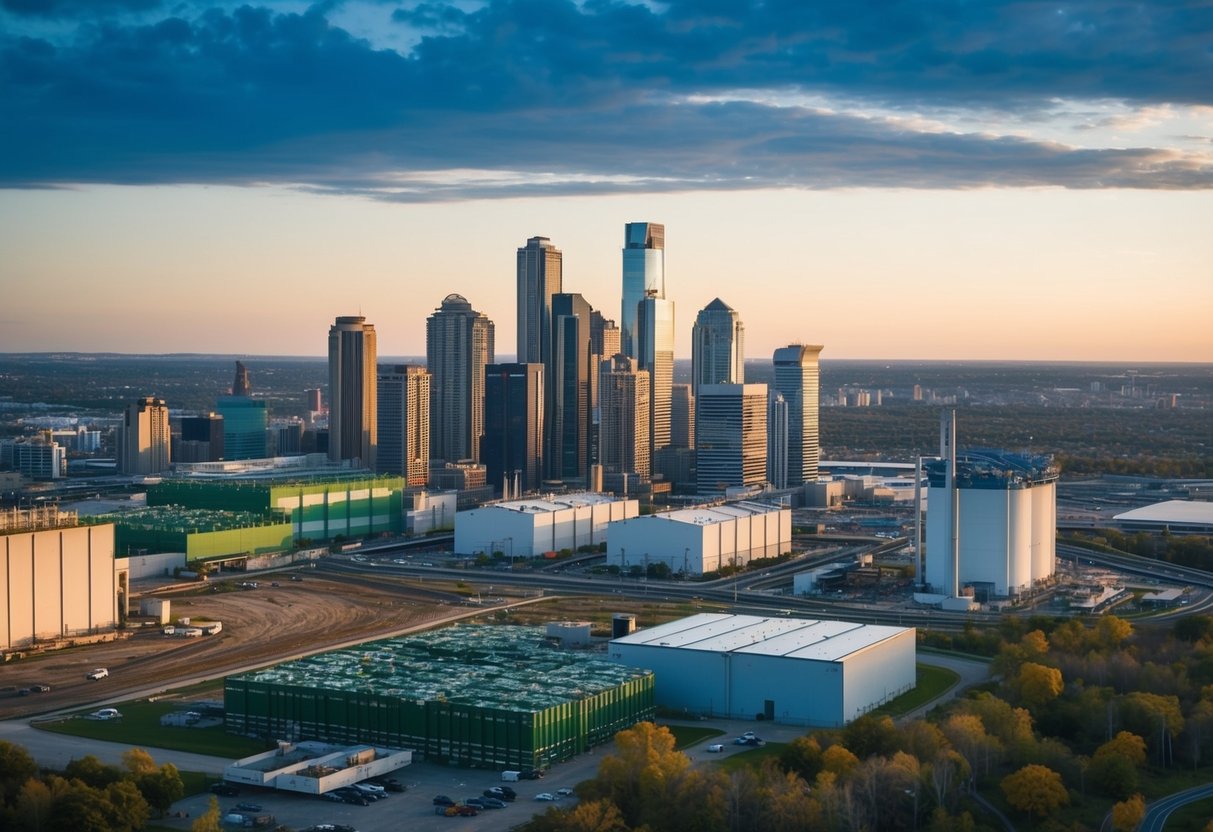
Waste management faces complex obstacles as cities grow and waste volumes increase. New technologies and environmental solutions are emerging to tackle these pressing issues.
Technological Advancements
Smart waste management systems use sensors and data analytics to optimize collection routes and reduce operational costs. These systems can predict bin fullness and adjust pickup schedules in real-time.
AI and machine learning help sort different types of waste more efficiently. Advanced sorting technologies can identify and separate materials like plastics, metals, and paper with greater accuracy.
Key innovations include:
- Automated sorting systems
- GPS-tracked collection vehicles
- Smart bins with fill-level monitoring
- Waste-to-energy conversion technologies
Environmental Challenges and Solutions
Plastic waste continues to harm ecosystems worldwide. Many cities now implement strict recycling programs and ban single-use plastics to reduce environmental impact.
Leachate management at landfills requires advanced treatment methods to protect groundwater. Modern facilities use membrane filtration and biological treatment processes.
Hazardous waste disposal demands specialized handling and treatment. New containment technologies and neutralization methods make disposal safer.
Future of Waste Management Technology
Robotics will play a bigger role in waste sorting and processing. Automated systems can work 24/7 and reduce human exposure to dangerous materials.
Sustainable tire management shows promise through innovative recycling methods. Shredded tires become construction materials or playground surfaces.
Advanced wastewater treatment systems will recover more resources from sewage, including:
- Biogas for energy
- Clean water for reuse
- Valuable minerals and nutrients
Zero-waste technologies focus on converting all waste into useful products. This includes new composting methods and waste-to-energy systems.
Frequently Asked Questions
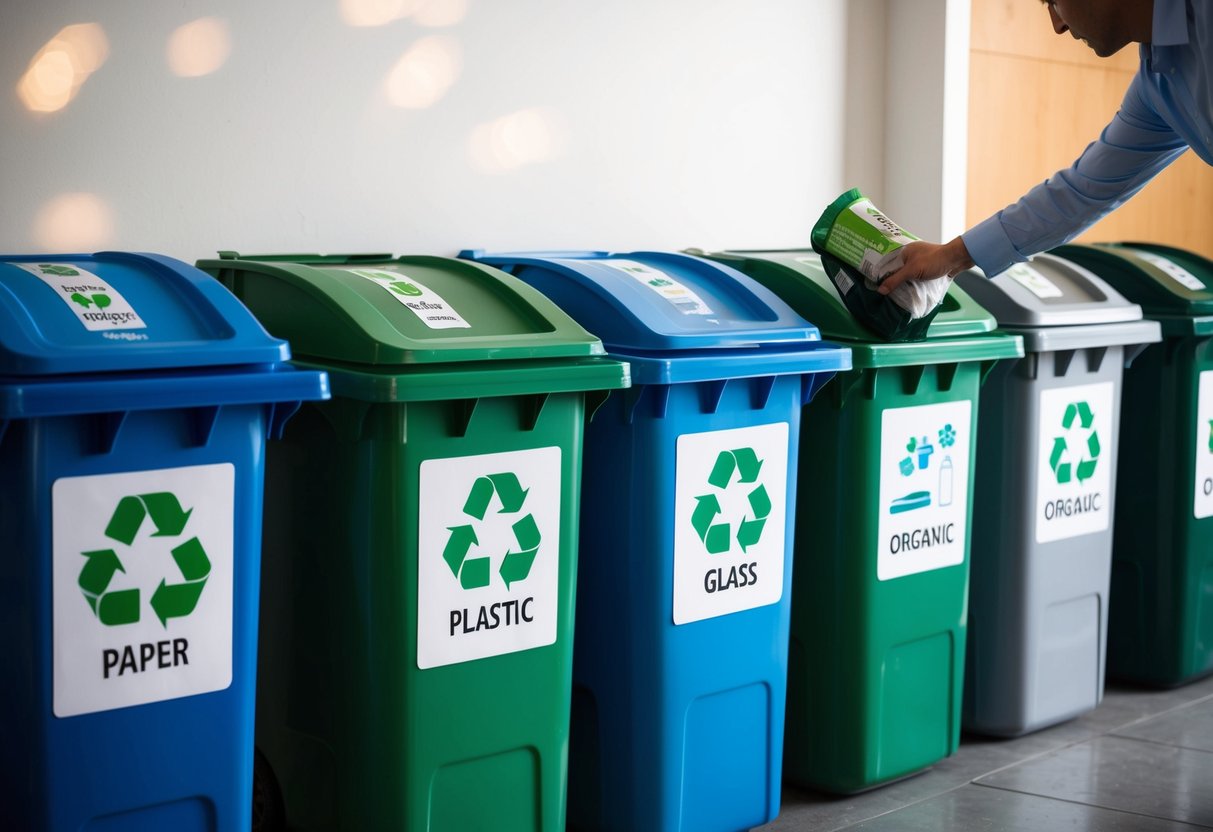
Managing waste effectively requires specific methods, proper segregation, and sustainable practices across different settings. These approaches help minimize environmental impact while maximizing resource recovery.
What are the different methods used in waste management?
Rate incentives and variable pricing systems encourage people to reduce their waste output and participate in recycling programs.
Composting transforms organic waste into nutrient-rich soil amendments, reducing landfill usage and creating valuable resources for agriculture.
Incineration with energy recovery converts waste into electricity and heat, though this method requires careful emission control.
How does hospital waste management differ from standard waste disposal?
Hospital waste requires strict segregation into categories like infectious, hazardous, and general waste. Each type needs specific handling procedures.
Medical waste must undergo sterilization or specialized treatment before disposal to prevent disease transmission.
Sharps and biological waste need special containment and tracking systems throughout the disposal process.
What are the sustainable practices involved in waste management?
Waste reduction preferences start with source reduction, which means creating less waste in the first place.
Recycling programs recover materials like paper, plastic, metal, and glass for reprocessing into new products.
Anaerobic digestion converts food waste into biogas and fertilizer.
Can you explain the concept of lean management in relation to waste reduction?
Lean management focuses on eliminating unnecessary processes and materials to reduce waste generation.
This approach includes inventory optimization to prevent expired products and excess storage.
Digital systems track waste creation points to identify improvement opportunities.
What role does waste segregation play in effective waste management?
Proper waste sorting ensures materials can be processed correctly and safely.
Color-coded bins and clear labeling help maintain separation between different waste types.
Segregation increases recycling rates and reduces contamination in waste streams.
Why is it important to understand various waste management techniques?
Different waste types require specific handling methods to protect human health and the environment.
Knowledge of waste management systems helps communities choose the most effective disposal methods for their needs.
Proper technique selection reduces costs and improves resource recovery rates.



